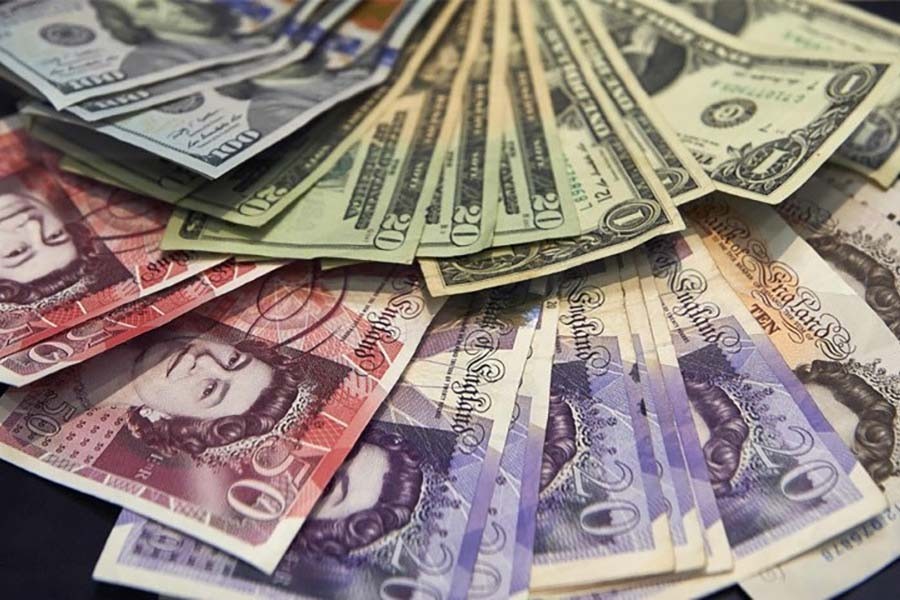The main use of a country's foreign reserve is to maintain liquidity to prevent inflation and meet any emergency as well as external obligations including clearing sovereign and commercial debts such as import bills. A sound foreign reserve position also gives the economy confidence as it can assure foreign investors to the effect that the host government has the means to protect their investments. In war, civil strife, natural disaster or in such other kind of crisis situation, flight of capital may take place in an economy. A strong foreign reserve position can guard against such eventualities. The reserve also helps keep the value of currency at a fixed rate.
In fact, the amount of foreign currency reserve in Bangladesh's central bank has long been at a comfortable level. The main source of the country's foreign currency being from exports of mainly apparel and remittances by the migrant workers, many feared that the pandemic would spell disaster for both the sources of the country's foreign currency earning. The fears were not unfounded either. After the first wave of the pandemic struck, initially, production and export of the readymade garments were seriously affected by lockdowns. At the same time, remittance inflow from migrant workers also dwindled. But the hard time did not last long. Gradually, even amid the pandemic both Readymade Garment (RMG) export and remittance inflow picked up. And the trend has been continuing to the bafflement of experts both at home and abroad. Meanwhile, the size of the forex currency reserve has broken all previous records. The latest estimate shows it at USD44.02 billion.
Seeing that the foreign currency reserve of the country has reached an all-time high and that the trend may continue further, the government has decided to invest a small portion of the fund in infrastructure development. To this end, it has also created a fund styled, Bangladesh Infrastructure Development Fund (BIDF). Annually, up to USD2.0 billion could be utilised from this fund to finance development projects especially in the port and power sectors. Initially, 524.56 million euros (equivalent to USD 624.22 million) from this fund will be used for financing a project for capital and maintenance dredging of Rabnabad channel of Payra seaport in Kalapara, Patuakhali. The idea is to use the BIDF fund to implement such projects as seem costlier to execute with external finance. In the present case, the Payra Port dredging project was originally set to be implemented by a Belgian company according to a previous deal with the Payra Port Authority. But the deal was later scrapped on grounds of the project cost being higher with foreign fund. Now that our own fund will be used, the project cost will be reduced drastically by about Tk5,600 crore (around USD661 million), it is learnt. Undoubtedly, we are talking about a substantial saving of hard currency in the execution of the Payra Port dredging project. Furthermore, the added benefit that is learnt to be had from the new arrangement is that the depth of the Rabnabad channel would get 10.5 metres deeper.
It is to be noted that the money from the foreign reserve under the BIDF has been given as a loan to a state agency, the Payra Port Authority. Similarly, private agencies will also be allowed to borrow from the fund and invest in profitable development work. In the Payra seaport dredging case, for example, a tripartite agreement has been reached between the finance division, Payra Port Authority and Sonali Bank. Under the arrangement, to carry out the dredging, the Payra Port Authority will get the 524 million euros through the Sonali Bank at the rate of 2.0 per cent interest. The Bangladesh Bank (BB), on the other hand, will charge at the rate of 1.0 per cent from the Sonali Bank. Aware that using foreign reserve in this manner involves risks, the government has assured that it is using the surplus reserve fund for the purpose. However, what one would term a surplus would depend on how you define it. Usually, the foreign currency is required to meet at least three months' import bill. The limit may be extended to six months' import bill or even one year's. The government, in the present case, is considering the minimum reserve to be at a level that would be required to pay six months' import cost. So, the money above that limit may be considered a surplus. From that point of view, the fund that the government is going to invest in the infrastructure project in question is from the 'surplus reserve fund'.
However, the government decision to put the reserve fund to such unconventional use has raised a few eyebrows. Some experts take the use of foreign reserve in this manner with a pinch of salt. Given our loan default culture, they see some degree of risk in such use of the reserve fund, especially, if the private sector gets involved. Since it is public money, there is a question of accountability. There is an implicit assumption here that the inflow of remittance will continue like this indefinitely. In fact, the present trend of remittance receipts has intrigued many. So, it is better not taken for granted. Especially, with the second wave of pandemic already raging through the country, we need to be prepared for any emergency. However, the government looks very confident and taking it all in its stride.


